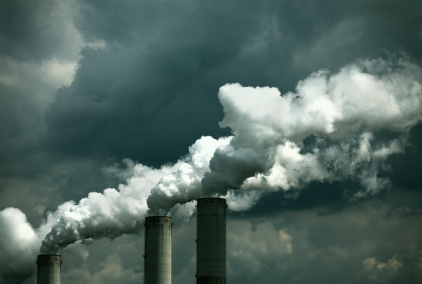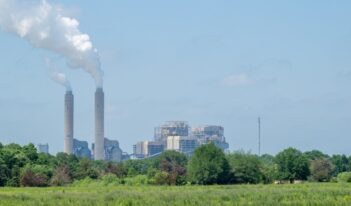
Proposed rule would impose the first greenhouse gas standards on new facilities.
The Environmental Protection Agency (EPA) last week proposed the first Clean Air Act standard governing carbon emissions for new power plants. The rule would cap the emissions of any new fossil-fuel-based power plants at 1,000 pounds of carbon dioxide per megawatt-hour of energy.
The EPA estimates that most natural gas-fueled power plants built would meet the proposed standard without any additional controls. By contrast, new plants that burn coal or petroleum coke would need to incorporate technology, such as carbon capture and storage (CCS), to meet the new standards. New plants incorporating CCS would also be permitted to use a 30-year average of CO2 emissions to meet the standard, giving them some flexibility in their early years.
The National Mining Association has criticized the proposal as “overtly calculated to destroy a significant portion of America’s electricity supply.” By contrast, environmental groups, such as the Natural Resource Defense Council and the Sierra Club have praised that the proposed rule, stating that it “will help usher in a clean, healthier future.”
Senator Joe Manchin of West Virginia argues that the proposed rule would expose consumers to the less stable price of natural gas by moving production away from coal.
However, according to the EPA, industry and government projections suggest that the industry already planned only to build new power plants fueled by natural gas over the next 10 years, even without the regulation.
In setting standards based on natural gas emissions, the EPA’s proposal is consistent with the emphasis President Obama’s strategy for energy security places on natural gas. About 40% of US greenhouse gases come from power plants. The proposal predicts that a new coal plant will not be built in the next 10 years for economic reasons, particularly the current drop in natural gas prices.
The EPA’s authority to regulate greenhouse gases (GHG) comes from the Clean Air Act, which the Supreme Court found in 2007 required the EPA to begin taking steps to address.
After making a formal decision in 2009 that greenhouse gases contribute to climate change and are harmful to the public, the EPA announced a settlement agreement in 2010 by which it would create rules addressing greenhouse gas pollution from fossil-fired electric generating facilities.
The EPA’s proposed rule would not apply to existing facilities or to units scheduled to begin construction within the next year.



